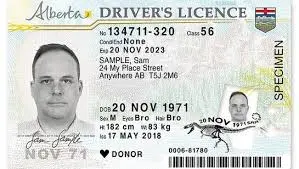Driving License in Canada, Obtaining a driving license in Canada is a significant milestone and an essential step toward gaining mobility and independence. Whether you are a Canadian resident or a newcomer to the country, knowing the process for acquiring a driving license can save you time and effort. This blogpost will walk you through the requirements, the different types of licenses, and the steps involved in obtaining your driving license in Canada.
Types of Driving Licenses in Canada
In Canada, driving licenses are categorized based on the type of vehicle you intend to drive. The most common categories include:
- Class 5 (Passenger Vehicle): The standard license for operating cars, vans, and small trucks.
- Class 6 (Motorcycle License): Required for motorcycle riders.
- Class 1 to 4 (Commercial Licenses): For drivers of large trucks, buses, taxis, and emergency vehicles.
Most people looking to drive personal vehicles will apply for a Class 5 license.
Graduated Licensing System
Canada operates under a Graduated Licensing System (GLS) designed to ensure that new drivers gain experience before earning full driving privileges. The steps may vary slightly between provinces, but the process typically consists of two stages:
1. Learner’s Permit (Class 7)
The first step is to obtain a learner’s permit, which allows you to practice driving under certain conditions. To apply, you must:
- Be at least 16 years old (the age requirement varies by province).
- Pass a written knowledge test covering road signs, traffic rules, and safe driving practices.
- Pass an eye test.
With a learner’s permit, you are required to drive with a fully licensed driver in the car, and there may be restrictions such as no driving at night or on highways.
2. Intermediate or Probationary License
After holding your learner’s permit for a designated period (usually around 12 months), you can apply for an intermediate license, also known as a probationary license. To qualify:
- You must pass a road test that assesses your driving skills.
- You must have a clean driving record during your time as a learner.
An intermediate license typically allows you to drive unsupervised but still comes with some restrictions, such as limits on the number of passengers or a zero-tolerance policy for alcohol.
3. Full License (Class 5)
The final stage is obtaining a full driving license. After holding an intermediate license for a set period (usually two years), you can apply for a full Class 5 license by passing another road test or simply by completing the waiting period with a clean record, depending on the province. This license grants you full driving privileges.
Provincial Differences
While the general process of obtaining a license is similar across Canada, each province has its own licensing system with unique rules and regulations. For instance:
- Ontario uses the G1, G2, and G system, with G being the full license.
- British Columbia follows a similar system with the L (Learner), N (Novice), and full Class 5 stages.
- Quebec has a slightly different process with learner’s licenses starting at 16 and requires passing both a written and practical driving test to progress.
It is important to check the specific requirements of the province or territory where you plan to apply.
Exchanging a Foreign Driving License in Canada
If you are a newcomer to Canada with a valid foreign driving license, you may be eligible to exchange it for a Canadian license. This depends on the country you are coming from, as Canada has reciprocal agreements with several countries, including the United States, the United Kingdom, and some European countries. If you are eligible, you can exchange your license without having to go through the full graduated licensing process.
If your country is not on the reciprocal agreement list, you may still be able to drive with your foreign license for a limited period, after which you will need to take knowledge and road tests to obtain a Canadian license.
Fees and Costs
The cost of getting a driving license in Canada varies by province, but you can expect to pay for:
- The knowledge test.
- The road test(s).
- License issuance fees.
- Vision testing (if required).
In total, the process may cost anywhere between CAD 100 and CAD 300, depending on the province and the number of tests required.
Conclusion
Obtaining a driving license in Canada is a step-by-step process that ensures drivers are well-prepared before gaining full driving privileges. Whether you are a new driver or looking to exchange a foreign license, understanding the requirements and process in your specific province is essential for a smooth experience. Once you have your Canadian driving license, you’ll have the freedom to explore this vast and beautiful country from coast to coast!
you might also like these:
